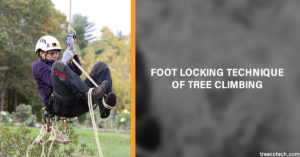
Foot Locking is the methodology used for climbing the canopies and is a popular one used for reaching to the heights of the trees. It is widely used by those who provide tree care solutions. It involves the use of tools like ropes etc. but the kind of gears have been changed over a period with the advancement in technology. The basic principle behind this technique is not to fix something which is not broken. There are a lot of tree safety measures which has come up regarding this technique, making it safer than it used to be.
Use of hitching or the knot:
The climber can use any kind of hitch, the only requirement is that it should be able to hold the grip of the rope properly. Different kinds of knots or hitches are available these days and the most common type is called as Prusik. The hitch is not supposed to handle all the weight of the climber. Only when the climber needs a bit of rest or in case of emergency the hitch should be relied on. This will also ensure tree safety. The dependency on the hitch can be reduced by regular practice of foot locking technique so that the muscles can get used to it. There are standards of weight and strength of the hitch which should be followed. Note that the line of the hitch must be smaller as compared to the ascent line. This will help in making the grip better. The standard number of loops is three which forms a six-coil Prusik. More wraps will only make the climbing difficult but will be better for friction. These are some of the safety procedures for tree specialists.
The process of climbing:
The tree specialist in India might use the footlock method on the static lines. This means the load of their body is handled by the hitch. In the dynamic system, this is not what happens. For this reason, the Prusik or the secured footlock should be used while climbing only. While descending, this could prove to be a bit risky and may lead to a fall. Therefore, it is important to be aware of all safety procedures for tree specialist. Mind that the hands of the climber should always be below the hitch. By keeping hands lower, the climber can avoid accidentally holding the hitch which can ultimately lead to its complete release. It is a good way to avoid any sudden descent.
Other methods to avoid falling is to look out for the bits of junk spread around the place. There will be some twigs, leaves, small pieces of branch which can get in between the ascent lines. Keep care of them while climbing.
If you are looking forward to climbing a tree or canopy all by yourself, then give it a second thought. It might not be very safe for you and instead, you should hire a Treecotech arboriculture specialist.
